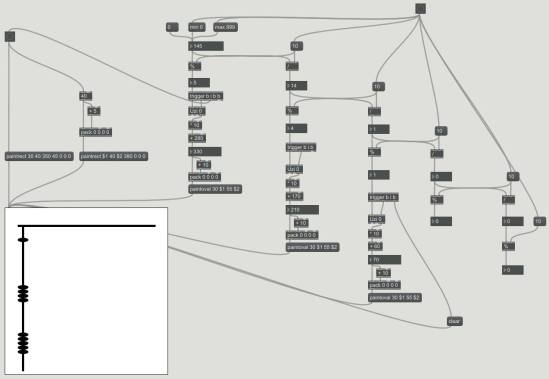This section will be dedicated to answer the question – How was the necklace made?
Even though the Incas do not consider metal to be as precious as fine cloth, metalworks of the Incas were perhaps the most advanced in America at the time. Metal jewelries and various handicrafts were considered as an community’s obligation, or a form of tributes, in the Inca society.
The raw materials were usually supplied by the local depots, and a certain quantity of articles would be collected as tax and tributes from each household. While a large part of the everyday articles such as clothes, shoes, rope were made by the working class or peasants, the luxury goods such as fine cloth, jewelry, ceramics were the work of specialists.
Some of the artisans worked directly for the court and others worked at local workshops for provincial leaders, they all have different backgrounds and bear different social status as well. While most of them were considered as servants, their social status would range from war captives to privileged officials. As they worked and earned their place, their status would increase. Some may become body guards, obtain works in governing positions, or even become important figure in the society.
Gold Necklace Today
The two most common methods of gold mining today are Placer Mining and Hard Rock Mining.
Placer mining is the technique to extract gold in a placer deposit where gold has accumulated. Which means that the placer deposits are commonly associated with ancient river channels that brought loose gold to a certain location. Because golds are 19 times heavier than water, the most common extraction process such as sluicing and dredging involves both a strong water current to swept away the unwanted materials and allowing the heavier gold to sink to the bottom of the current.
Hard rock mining extracts gold encased in rock, rather than fragments in loose sediments like in placer deposits, and this kind of mining produces most of the world’s gold today. The mine can also be either open-pit or underground.
Once pure gold were obtained, gold can be made into jewelries by itself or with other gemstones or rare metals. Gold can also be plated onto other object as a coating. The most common method used today is electroplating. Hand engravings are also rarely seen today and has been replaced with more accurate methods like laser engraving.
How was the necklace made?
The Andes mountain region in today’s Peru were rich in minerals. Mining site predates the Incan empire has also been found throughout the Southern Nasca region in Peru. Most evidence today suggests that Inca mining was fairly extensive. Spanish also recorded that, in the 16th century, they contracted local workforces and forced laborers to mine for gold and silver in the mountains.
The below picture by the Spanish depicts a local legend of a mountain full of gold and silver.

The Inca were a conquering society, and their expansionist assimilation of other cultures is evident in their artistic style, which utilized the vocabulary of many regions and cultures and incorporated them into a standardized imperial style that could be easily be replicated and spread throughout the empire.
The civilization of Chimu contributes a great amount of metal working culture to the Inca society when they were conquered by the Incas around 1470 AD. Copper, tin, gold, and silver were all obtained from mines or washed from the river gravels. This suggested that the Incas practiced both Placer mining and Hard rock mining like we do today.
The mined mineral would be handed over to the metallurgist, or metal specialists, and the more precious metal such as gold, silver, and magnesium would be used to make ornaments and decorations. The process of refining gold ores from hard rock mining started by heating the metal to very high temperatures and then cooled, resulting in small pallets of prills in a mass of slag (materials that are not useful for metallurgy). The prills are then extracted by crushing the slag, and then melted together to form ingots, which can be further fashioned into various items.
To create different shape, texture, and style of gold ornaments, the specialists would divide the metal treatment into plating, stamping, watermark, pearl, and embossing wooden molds. They use arsenic to harden the metals after they were cast, and smelting would take place in cluster of local workshops.

![$HI3K`3`T@~0%9SO]J0}E$A](https://cwl140130.wordpress.com/wp-content/uploads/2015/10/hi3k3t09soj0ea.jpg?w=99&h=150)
Let’s take a closer look at the craftsmanship of this necklace. We can see that the beads were joint by two semi-spherical gold pieces and there are indentations on the surface of the beads. For the face icon on the cylindrical beads, we can see signs of carving and engraving made by hands as the figures are clearly not identical.
From the right image we can see that the beads are hollow, suggesting that they were made into sheets of gold before folding and molding into spherical shapes, hence might explains the indentations on the surface. The beads were sprung together by threads, most likely made from animal wool. Incas also use plants to make threads, but usually in items that are less valuable and would need regular replacement. Since this artifact would belong to the upper class or have certain religious meaning, it is reasonable to think that threads were used to strung the beads together.
Some historians suggested that the choice of gold was to distinguish the more “sacred” or “holy” pieces from others, as the beautiful reflection that gold casts could be symbolized with the Incan religion surrounding the sun. Gold was reserved for the highest class of Incan society which consisted of priests, lords and the emperor – Sapa Inca himself.
Sources:
http://www.worldtrek.org/odyssey/teachers/peruexcerpts/artisanexcerpt.html
https://en.wikipedia.org/wiki/Gold_mining
http://latinamericanhistory.about.com/od/theconquestofperu/p/The-Treasure-Of-The-Inca.htm
http://www.esotericonline.net/profiles/blogs/the-rich-mountain-that-eats-men
https://en.wikipedia.org/wiki/Chimú_culture


![FX_SAAPW_6@Y$@J]%DV8Q[F](https://cwl140130.wordpress.com/wp-content/uploads/2015/09/fx_saapw_6yjdv8qf.jpg?w=549&h=359)













![$HI3K`3`T@~0%9SO]J0}E$A](https://cwl140130.wordpress.com/wp-content/uploads/2015/10/hi3k3t09soj0ea.jpg?w=99&h=150)





![U]82CCPJAMU2K97BHI}1GY8](https://cwl140130.wordpress.com/wp-content/uploads/2015/10/u82ccpjamu2k97bhi1gy8.jpg?w=300&h=138)


![JK4YN4{FA82}5X9C0GR%U]3](https://cwl140130.wordpress.com/wp-content/uploads/2015/09/jk4yn4fa825x9c0gru3.jpg?w=549&h=376)


